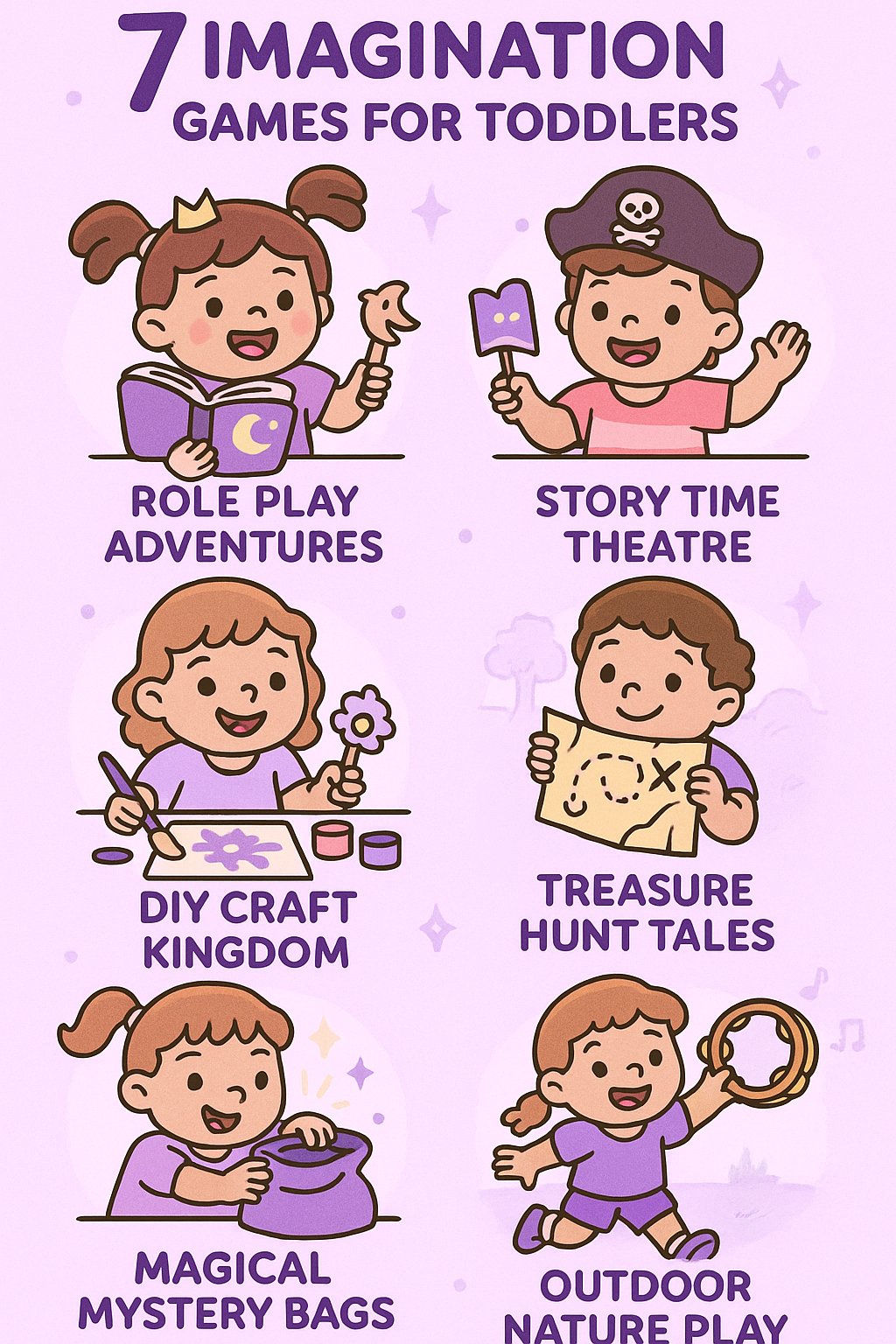7 Imagination Games For Toddlers
Imagination games for toddlers are essential for nurturing creativity and cognitive development. Engaging in imaginative play helps toddlers explore the world around them, enhancing their problem-solving skills and emotional intelligence.
Encouraging your toddler to use their imagination not only fosters creativity but also aids in cognitive and social growth.
Here are some engaging and fun imagination games that will captivate your little one’s mind and keep them entertained for hours.
Heads up: This post may include affiliate links. As an Amazon Associate, I earn from qualifying purchases—at no extra cost to you. Full privacy policy and disclosure here.
Imagination Games For Kids
1. Role Play Adventures
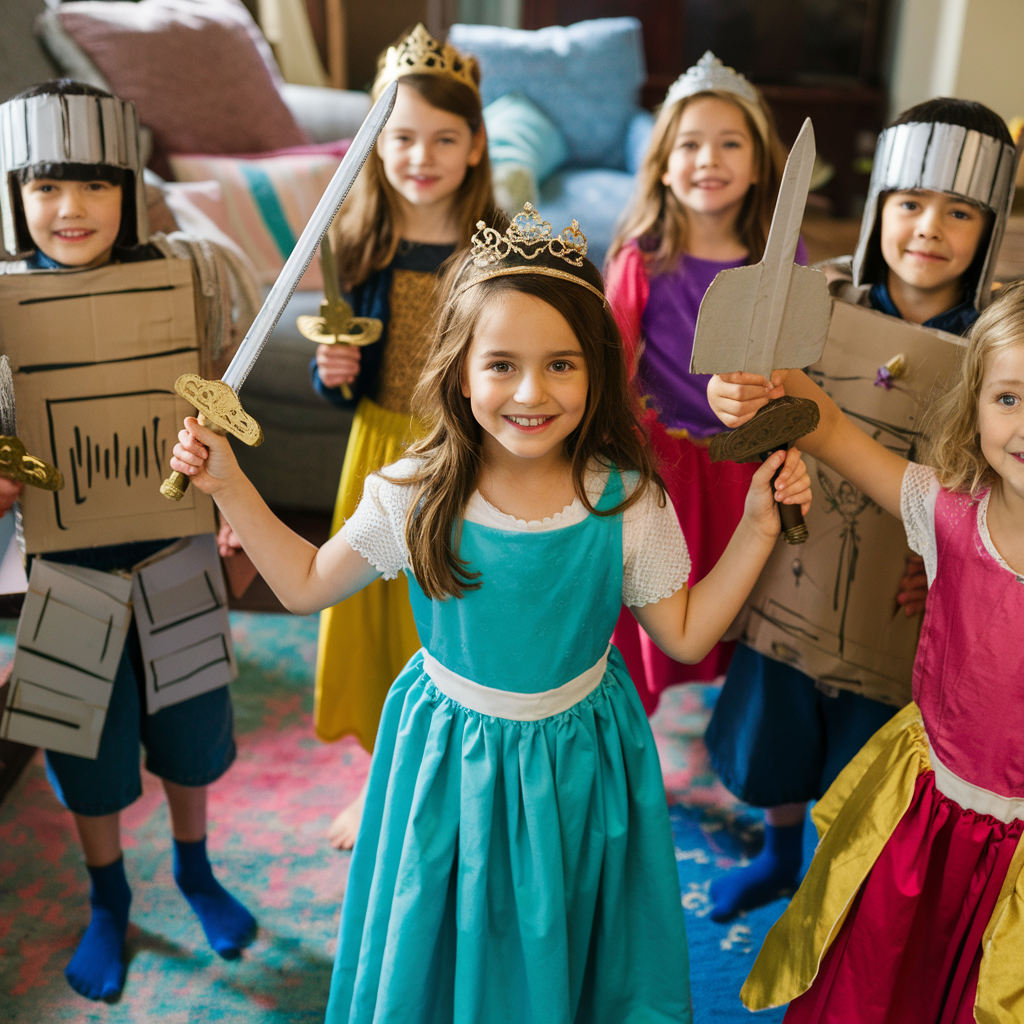
Role-playing is a fantastic way for toddlers to explore different scenarios and personas. Create a simple costume box filled with hats, scarves, and various props. Encourage your child to become a doctor, a chef, or a superhero. Watch as they invent stories and solve imaginary problems, all while learning empathy and problem-solving skills.
2. Story Time Theatre
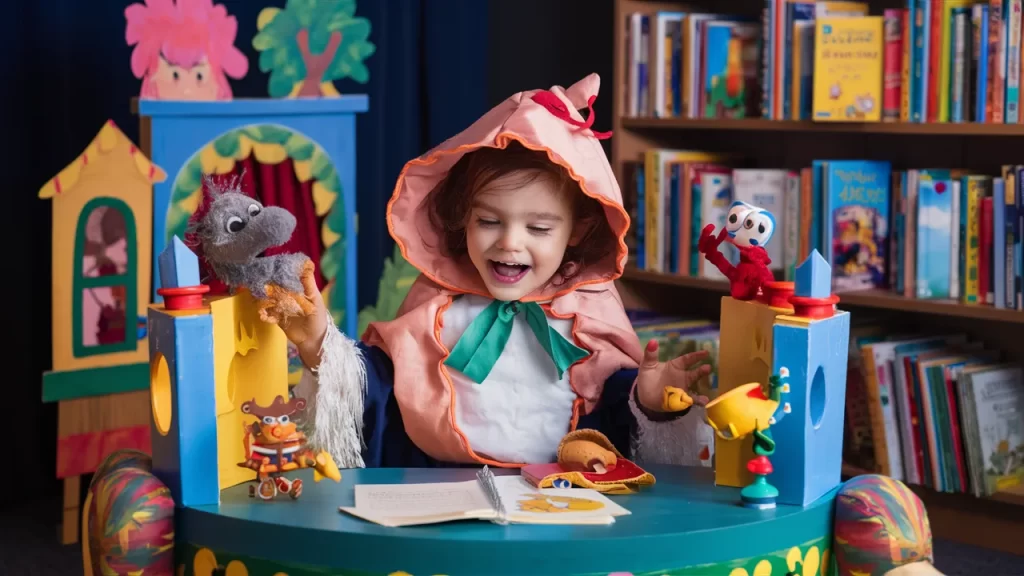
Turn story time into a theatrical experience. Read a favorite book together, and then act out the story. You can use puppets, toys, or even dress up as the characters. This activity helps with language development and allows your child to delve deeper into the narrative, enhancing their understanding and retention.
3. DIY Craft Kingdom
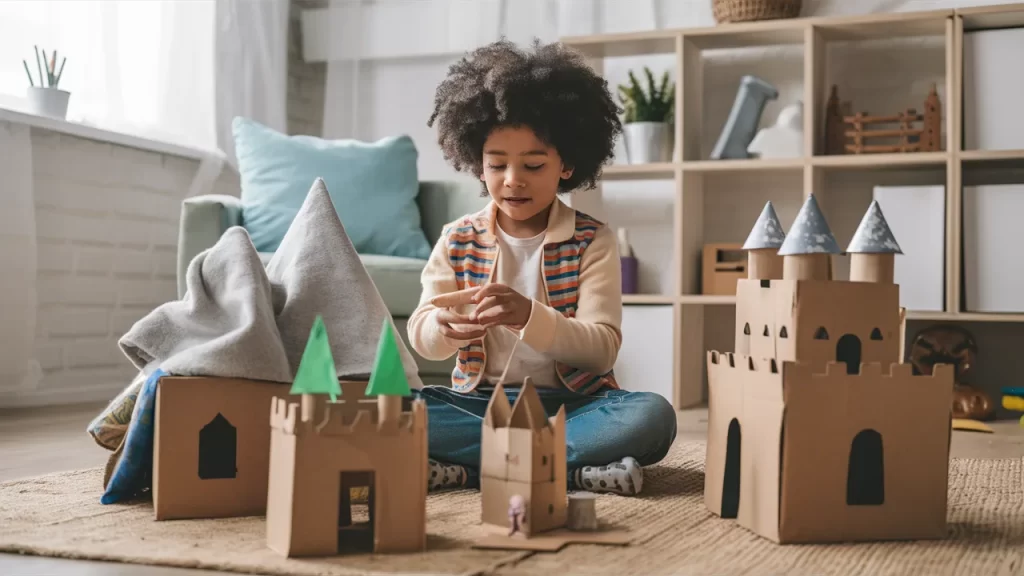
Create a kingdom using everyday household items. Blankets become mountains, pillows are hills, and cardboard boxes transform into castles.
Invite your child to build and decorate their kingdom, deciding who lives there and what adventures might happen. This hands-on activity boosts fine motor skills and spatial awareness.
A study highlighted by the Herald Sun emphasizes the benefits of parents engaging in pretend play with their children
4. Treasure Hunt Tales
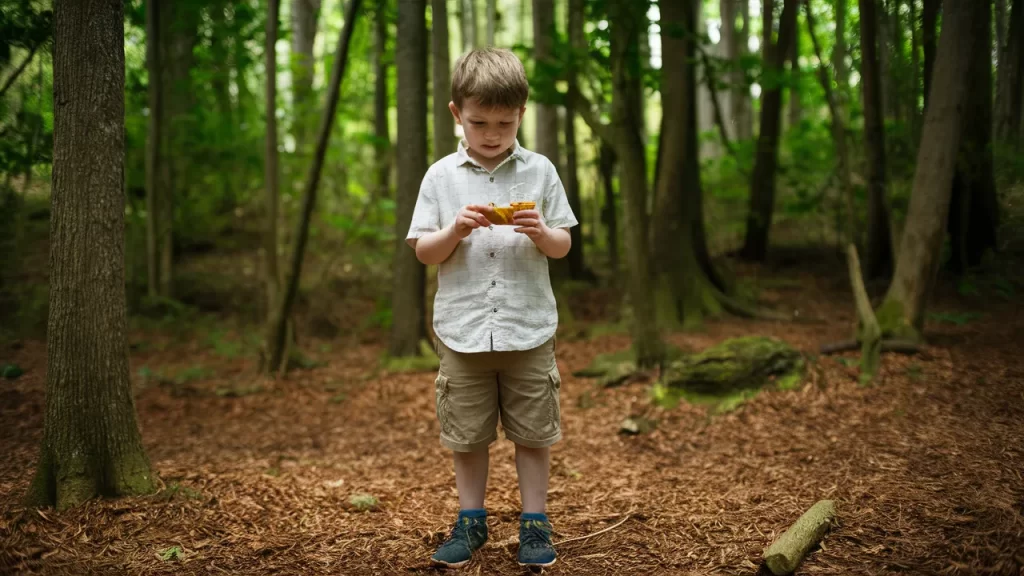
Organize a treasure hunt around your home or yard. Draw a simple map and create clues that lead to hidden treasures. These treasures could be small toys, snacks, or even stickers. This game encourages problem-solving, teamwork (if they play with friends or siblings), and the joy of discovery.
5. Magical Mystery Bags
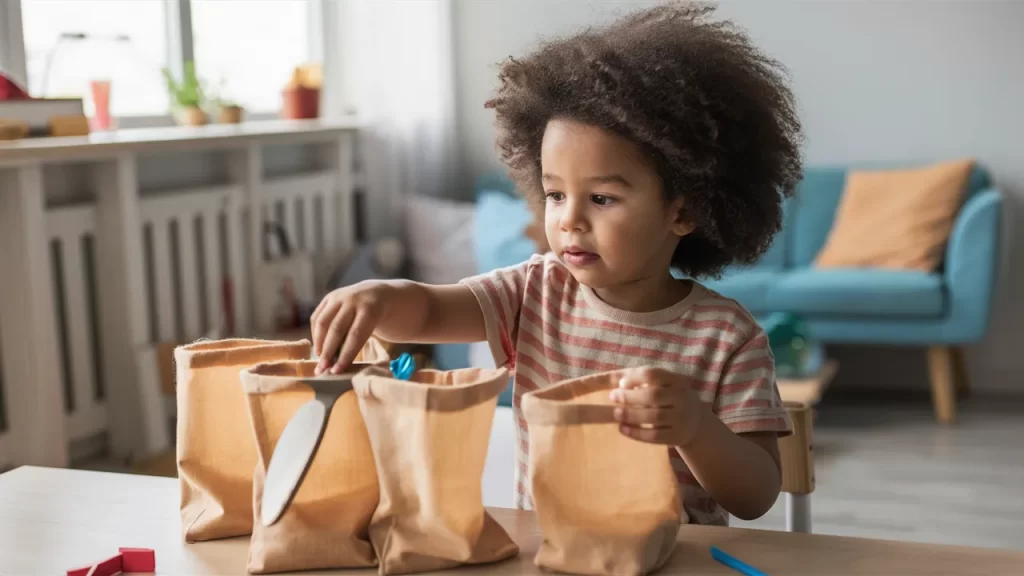
Fill a few bags with different objects like a spoon, a toy car, or a feather. Have your toddler reach in and feel the object without looking, then use their imagination to create a story about the object. This game enhances sensory awareness and encourages creative thinking as they invent stories around the objects they find.
According to the Raising Children Network, imaginative play is crucial for toddler development.
6. Outdoor Nature Play
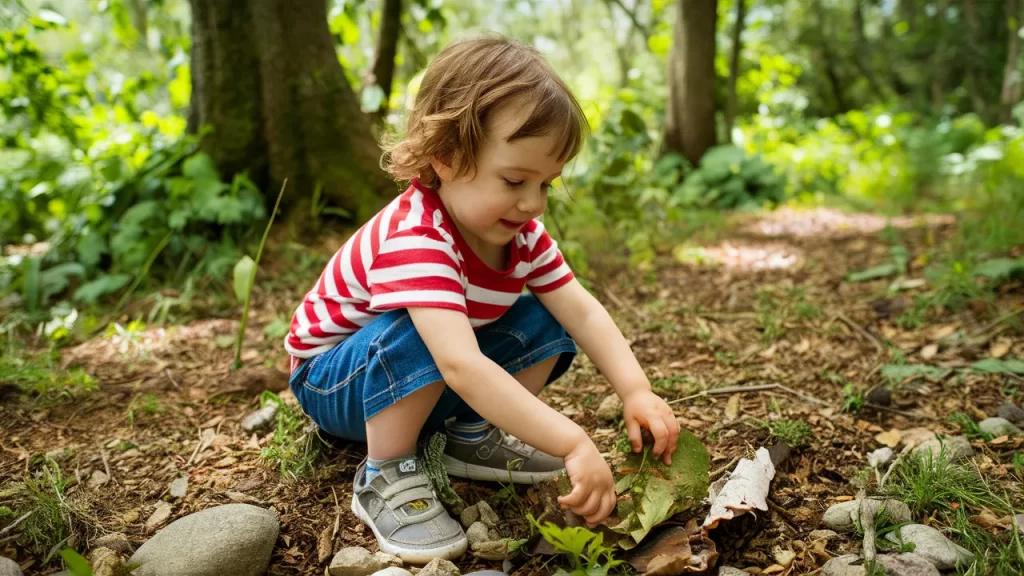
Nature is a rich source of inspiration. Take your toddler on a nature walk and collect leaves, rocks, and flowers. Back at home, use these items to create a nature collage or a mini garden. Discuss the different textures, colors, and shapes, sparking their curiosity and appreciation for the natural world.
7. Music and Dance Fantasy
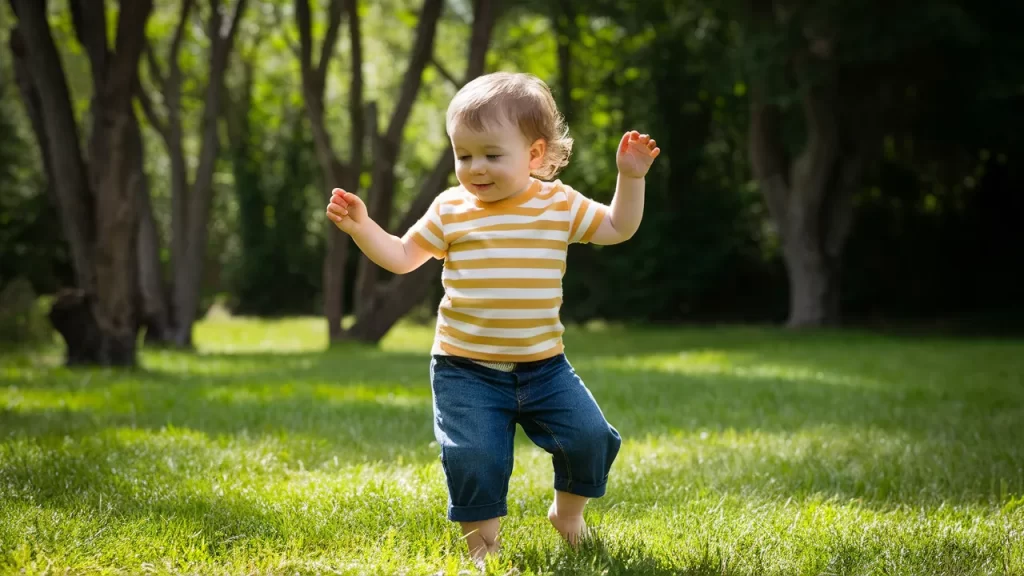
Play a variety of music and encourage your toddler to dance and move as they feel the music. You can introduce them to different genres and ask them to imagine what kind of story the music is telling. This activity enhances their auditory skills and helps them express emotions and ideas through movement.
Looking for more ways to engage your toddler? Check out our Best Toddler Apps That Don’t Need Wifi for screen-free fun.
FAQ
What are some simple imagination games for toddlers?
Simple games include role-playing as different characters, creating stories with toys, and setting up pretend scenarios like a grocery store or a doctor’s clinic.
How do imagination games benefit toddler development?
These games enhance creativity, improve language skills, and foster social and emotional development by allowing toddlers to explore different perspectives and scenarios.
Can imagination games be played outdoors?
Absolutely! Activities like treasure hunts, nature walks with storytelling, and outdoor role-play scenarios are excellent for imaginative play.
What materials are needed for these games?
Common household items like boxes, clothes, and toys can be used. Additionally, consider using items like Melissa & Doug Wooden Building Blocks for building scenarios.
How often should toddlers engage in imaginative play?
Daily engagement is beneficial. Even short sessions of 15-30 minutes can significantly impact their development.
Bottom Line
Imagination games are more than just fun; they are crucial for your toddler’s development.
By incorporating these activities into your daily routine, you’ll be nurturing a creative, curious, and confident child.
So, dive into these imaginative adventures and watch your toddler’s creativity soar!/image
